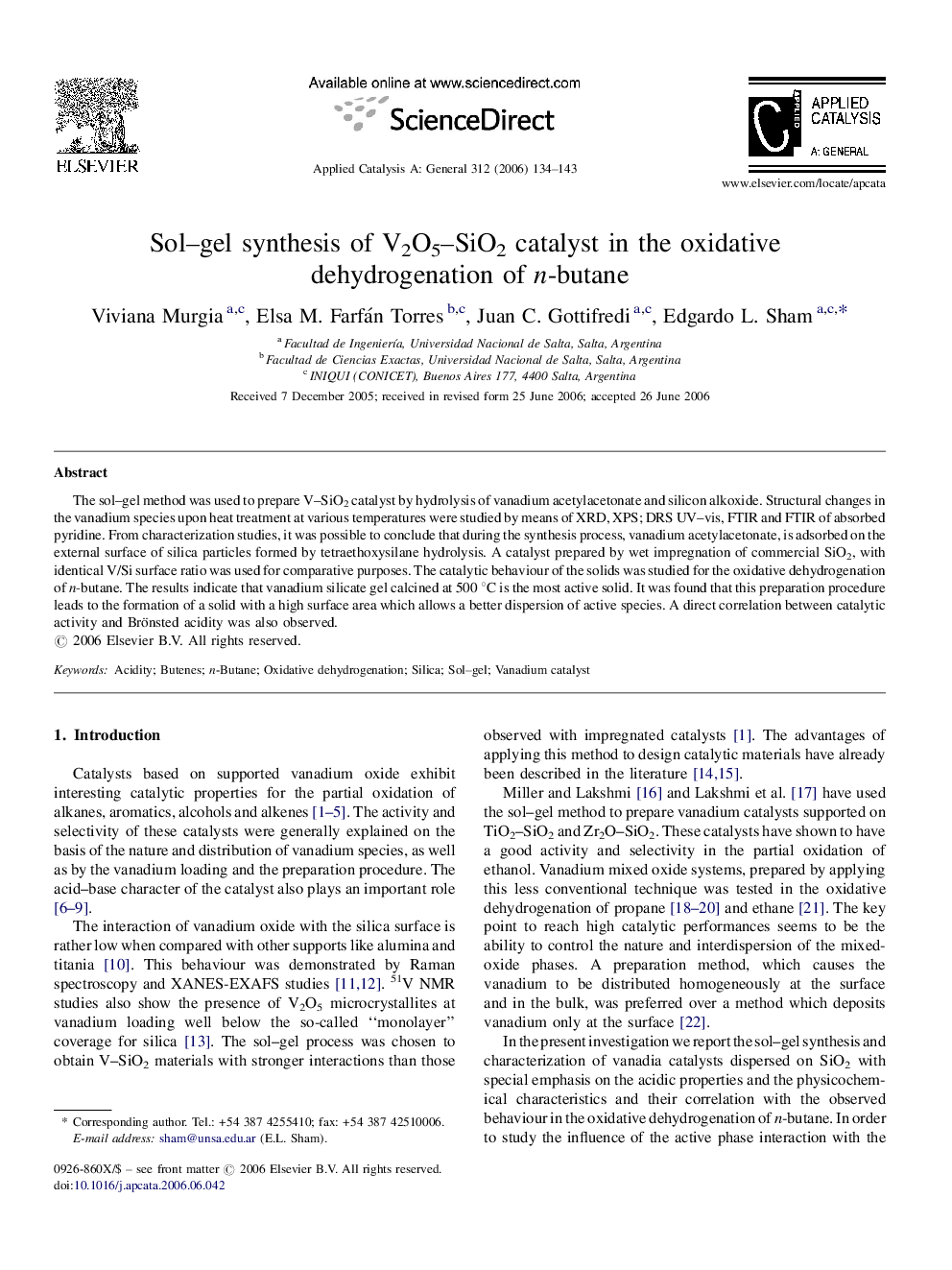| کد مقاله | کد نشریه | سال انتشار | مقاله انگلیسی | نسخه تمام متن |
|---|---|---|---|---|
| 44605 | 46044 | 2006 | 10 صفحه PDF | دانلود رایگان |

The sol–gel method was used to prepare V–SiO2 catalyst by hydrolysis of vanadium acetylacetonate and silicon alkoxide. Structural changes in the vanadium species upon heat treatment at various temperatures were studied by means of XRD, XPS; DRS UV–vis, FTIR and FTIR of absorbed pyridine. From characterization studies, it was possible to conclude that during the synthesis process, vanadium acetylacetonate, is adsorbed on the external surface of silica particles formed by tetraethoxysilane hydrolysis. A catalyst prepared by wet impregnation of commercial SiO2, with identical V/Si surface ratio was used for comparative purposes. The catalytic behaviour of the solids was studied for the oxidative dehydrogenation of n-butane. The results indicate that vanadium silicate gel calcined at 500 °C is the most active solid. It was found that this preparation procedure leads to the formation of a solid with a high surface area which allows a better dispersion of active species. A direct correlation between catalytic activity and Brönsted acidity was also observed.
Journal: Applied Catalysis A: General - Volume 312, 8 September 2006, Pages 134–143